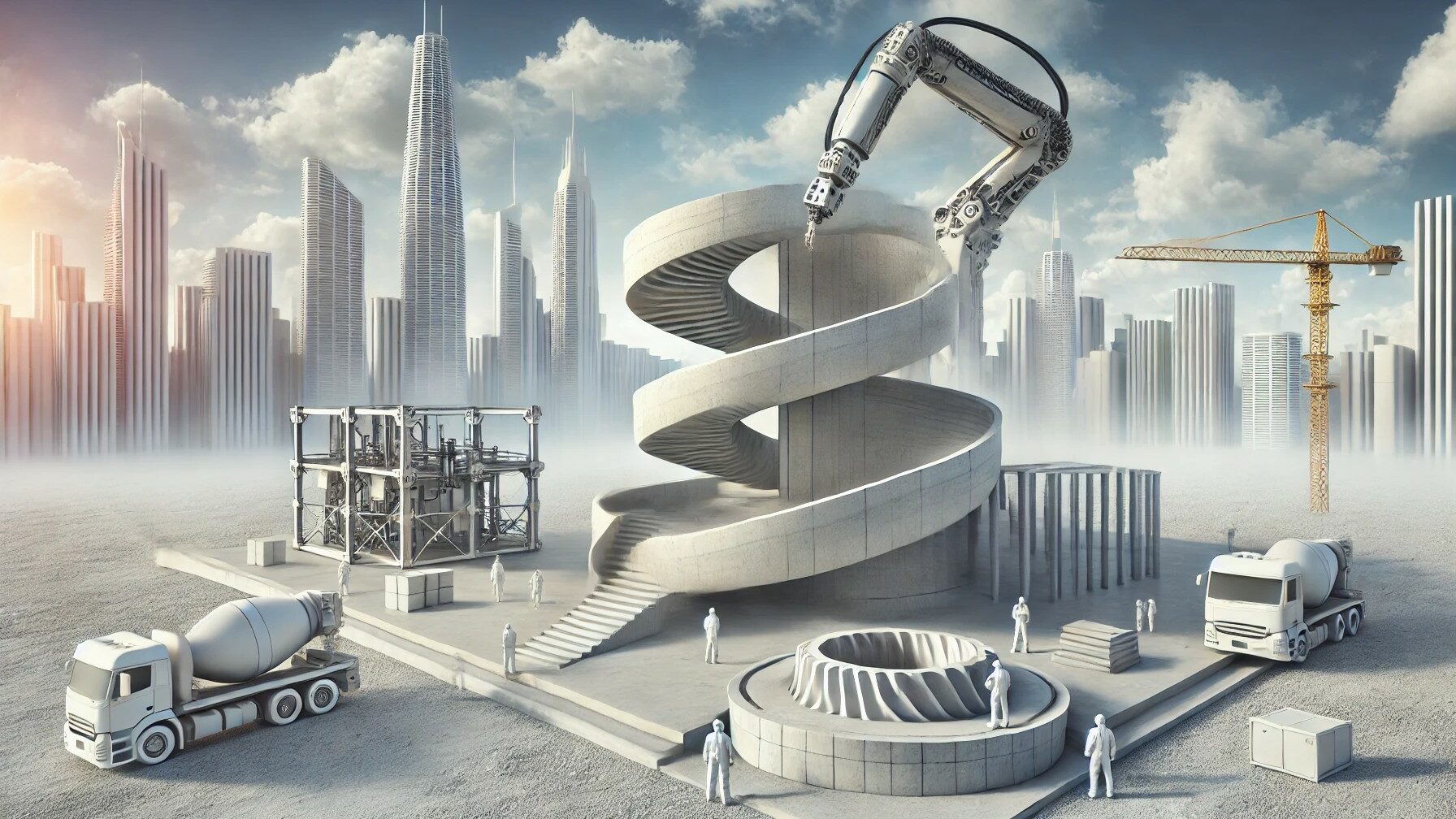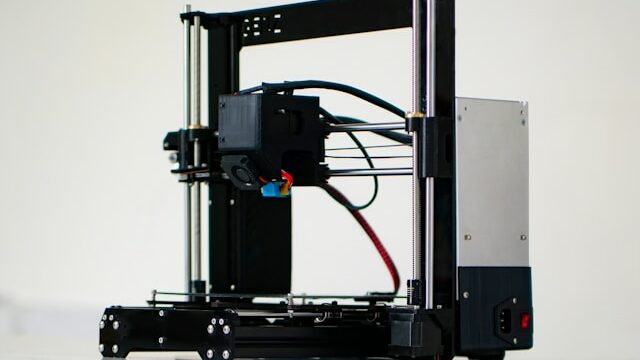Want to learn more about 3D printing of buildings? At Imprimy, we’re here to answer all your questions.
3D printing of buildings is an innovative technology that makes it possible to construct structures by layering materials like concrete, directly from a digital model.

Is 3D printing used in construction?
3D printing is already used in construction, allowing the creation of houses, offices, and even bridges more quickly, with less waste and innovative architectural shapes.
The history of 3D printing of building construction
3D printing of buildings began to emerge in the early 2000s, with the first experiments in automated construction. In 2004, a professor from the University of Southern California developed contour crafting, a revolutionary technique.
This method uses a giant 3D printer to deposit layers of construction materials, such as concrete. Since then, this technology has evolved, enabling the fast and cost-effective construction of complex structures.
The materials used to 3D printing of buildings
The materials used for 3D printing of buildings mainly include concrete, often reinforced with fibers for improved strength. Other materials such as polymers, composites, and even clay-based mixtures are also being explored.
These materials are selected for their durability, cost, and ease of extrusion. Innovation in this field aims to develop more eco-friendly and efficient materials.
The advantages of 3D printed buildings
3D printed buildings offer many advantages, including a reduction in costs and construction time. This technology allows for high precision and increased customization of architectural designs.
It also reduces construction waste, making the process more eco-friendly. Finally, 3D printing facilitates construction in hard-to-reach or disaster-affected areas.
What are the limitations of 3D printing in building construction?
The limitations of 3D printing in building construction include the size of the structures that can be produced, the limited material compatibility, the high cost of equipment, as well as regulatory and technical constraints that hinder its large-scale adoption.
The technical difficulties of 3D printing of buildings
3D printing of buildings faces several technical challenges, especially related to structural strength and material durability. Logistical constraints, such as the transport and assembly of 3D printers on construction sites, also pose difficulties.
The precision and printing speed must be constantly optimized to meet building standards. Finally, the integration of electrical and plumbing systems within printed structures remains complex.
The regulatory obstacles related to 3D printing of buildings
The regulatory obstacles for 3D printing of buildings include the lack of specific standards adapted to this emerging technology. Current building regulations do not always cover the materials and methods used in 3D printing, posing challenges for approval.
Safety issues and compliance with building codes require legislative updates. Finally, insurance and liability in case of structural defects remain gray areas that need clarification.
The environmental impact of 3D printing of buildings
3D printing of buildings significantly reduces construction waste through precise use of materials. It also enables a decrease in CO₂ emissions, notably by limiting transportation and energy-intensive processes.
However, the impact depends on the type of materials used, some of which may remain polluting. Therefore, assessing its overall environmental footprint requires a full life cycle analysis.
The future of 3D printing in the construction sector
The future of 3D printing in construction looks promising, with advancements aimed at reducing costs, improving the durability of materials, accelerating housing production, and even building in extreme environments such as disaster zones or space.
Future innovations in 3D printing of buildings
Future innovations in 3D printing of buildings aim to use sustainable materials like clay, hemp, or recycled composites. Advances in robotics and artificial intelligence enable faster, more precise, and autonomous construction.
You should also expect the development of modular structures adapted to disaster-stricken or isolated areas. Finally, architectural customization will become more accessible thanks to these technological advances.
Some obstacles before large-scale adoption of 3D printing of buildings
Among the main obstacles, you can find the lack of standards and regulations adapted to 3D printing in the building sector. The high initial costs of equipment and materials also slow down its adoption.
Moreover, the training of professionals remains limited, delaying the spread of the technology. Finally, technical constraints persist for large-scale projects or in certain climatic environments.
A major potential impact on the construction market
3D printing of buildings could revolutionize the construction market by reducing both time and costs of projects. It would allow for a more efficient response to the housing shortage, especially in areas with rapid population growth.
This technology promotes more sustainable and customizable construction. Ultimately, it could transform the traditional economic models of the sector.
Conclusion: 3D printing of buildings
3D printing of buildings represents a promising revolution for the construction sector. It combines speed, durability, and architectural flexibility, while also presenting new technical and regulatory challenges.
If these obstacles are overcome, it could become a key solution to urban and environmental challenges. The future of construction might very well be built layer by layer.
Image generated by DALL·E, an artificial intelligence model developed by OpenAI.
The articles published on Imprimy.com are for informational purposes only. They are intended to provide general advice and information related to 3D printing. Imprimy.com cannot be held responsible for the results obtained or the consequences arising from the application of the shared information. We recommend always checking the specific instructions for your hardware and materials before use.


